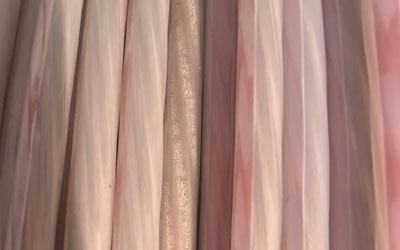Causes for Water Droplets Between Insulation and Conductor After Steam Cross-Linking
The presence of water droplets between the insulation layer and conductor after steam cross-linking (CCV cross-linking) is primarily related to the following causes and requires systematic troubleshooting:
Cause Analysis
1. Insufficient Conductor PreheatingWhen conductor temperature <60°C, surface-adsorbed moisture cannot fully evaporate and condenses in the cross-linking tube.
Case study: Increasing preheat from 50°C to 80°C reduced water droplets by 70%.
2. Substandard Nitrogen Purity
Nitrogen dew point >-40°C (qualified standard should be <-60°C) contains excessive water vapor, which condenses in the cooling section.
Detection method: Online dew point meter reading + gas chromatograph oxygen analysis (<50 ppm required).
3. Abnormal Cross-Linking Tube Cooling
Uncontrolled cooling water temperature gradient (e.g., first-stage water temperature >50°C) causes premature outer layer solidification, trapping internal moisture.
Standard parameters: Three-stage cooling at 30°C/20°C/10℃ (±2°C).
4. Damp Insulation Material
XLPE moisture content >0.02% (ASTM D3182 requires ≤0.01%) releases vapor during cross-linking.
Critical control: Post-unpacking dehydration in 80°C drying oven for ≥4 hours.
Solutions
1. Process AdjustmentsConductor preheating: Use infrared + eddy current hybrid heating to ensure surface temperature reaches 80±5°C (measured 3m from end).
Nitrogen system:
Install molecular sieve adsorber (dew point stabilized below -70°C);
Maintain flow rate at 25-30m³/h (for Φ150mm tube).
2. Equipment Upgrades
Cooling system:
Stage 1: Spray cooling (28-32°C);
Stage 2: Turbulent cooling (18-22°C);
Stage 3: Chilled water circulation (8-12°C).
Add steam traps: Install 304 stainless steel traps at tube outlet to collect condensate.
3. Material Handling
XLPE storage: Constant temp/humidity chamber (25°C/RH<30%);
Pre-use treatment: Vacuum drying (-0.08MPa, 60°C×6h).
Verification Tests
1. Moisture TestingKarl Fischer titration (pass criteria: <50mg/kg in insulation);
Conductor surface water film test (3M moisture-sensitive paper color change).
2. Interface Analysis
Ultrasonic scanning (20MHz probe detects droplets <0.3 mm);
Section staining (methylene blue solution penetration observation).
Preventive Measures
1. Online Monitoring:IR thermal imaging for preheat temp (10Hz sampling);
Dew point sensor interlock (auto-shutdown if >-50°C).
2. Maintenance Protocols:
Daily silica gel inspection in nitrogen dryer (replace if blue→pink);
Monthly pressure sensor calibration (±0.02 MPa).
